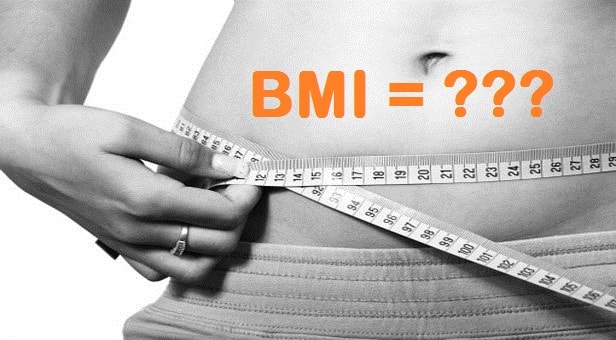Have you ever wondered if there is a quick method to determine if an individual is underweight, overweight, obese or normal? Such a method does exist and scientists have termed it as BMI.
BMI literally stands for Body Mass Index. It is an indicator of your health. Let us learn all about this term and its significance:
What is BMI actually?
BMI is a factor which helps individuals as well as doctors to determine whether you have excess amounts of flesh in your body or if you are skinny. It is a number which can help you compare your current weight with the ideal weight for your gender and height.
It is a great way to decide whether you need to reduce or increase your weight to remain healthy.
How to calculate your BMI?
It is actually a number, and this number is determined by using your weight and height.
The formula for the calculation is:
BMI = Weight in kilograms ÷ Height in square meters
| Body Mass Index (BMI) | Weight Status |
| Below 18.5 | Underweight |
| 18.5 – 24.9 | Normal |
| 25.0 – 29.9 | Overweight |
| 30.0 plus | Obese |

BMI and its Significance
Your BMI can range anywhere from below 18, somewhere in between, or above 30. Each number puts you in a certain category which can help you a lot in determining and improving your health level.
If your BMI is below 18.5 then it’s a red flag for your health. It means you might be at risk of anorexia and malnutrition. A dietitian or a doctor can help you in gaining weight for maintaining a normal and healthy lifestyle
If your BMI is somewhere between 18.5 and 24.9 then you fall in the normal weight category. You have moderate body fat which is just enough to make you look alluring. So, give yourself a pat on the back for falling in this category and celebrate your health!
RECOMMENDED FOR YOU
Vegetarian Diet Is So Famous, But Why?
HIIT Exercises: How To Achieve More By Doing Less?
If your BMI is between 25 and 29.9 then consider yourself as overweight. This is a warning sign that shows you have to cut reduce your body fat to stay attractive and healthy. Contemplate about your lifestyle and diet and make the necessary changes to control your weight.
If your BMI comes out to be 30 or above then it is definitely a red flag. If you fall under the obese category and are at high risk for many diseases, especially diabetes and heart diseases. You should take an appointment with your doctor or a dietician and come up with a plan to reduce your Body Mass index.
You might have to maintain strict rules for food intake and exercise otherwise your health and life could be at stake.
Importance of BMI in Medical Science
BMI in itself is not a concrete diagnosis but the first step towards determining your potential health issues. If your count is higher or lower than the normal range, your doctor might:
- Take your skinfold thickness measurements to determine fat accumulation patterns in your body
- Evaluate your diet and physical activity
- Take the medical history of your family
- Ask you to take other health screening tests.
- Your doctor and dietitian will then be able to provide you with a diet and exercise plan based on these results

Dealing with Obesity
If you have a high BMI your doctors may advise you to reduce weight since obesity can be the leading cause for diabetes, high cholesterol, high blood pressure, heart diseases, and osteoporosis etc. The international study of obesity says it is alarming to find that there are millions of people who are in the obese category.
Age plays a critical factor in taking necessary actions against obesity. Obesity is prevalent in kids as well as adults.
If you are an adult then make the necessary changes in your lifestyle to control your weight. Obesity can affect your mood, self-esteem, and confidence along with your health which can get harder to normalize as you age. Get a gym membership and start taking care of your body to become healthy.
If you are old and obese then a dietician is your best bet. He/She can guide and make a diet plan with you keeping your medical conditions if any, and medical history in mind.
BMI in Children
BMI for children is calculated a bit differently as it doesn’t measure the amount of fat accumulated in a child’s body, but the volume of muscles, fats, and bones. This count for a child is plotted on a specific chart to find whether the child is normal, obese or underweight.
BMI = Weight in kilograms / Height in square meters x 10,000
Body Mass Index less than the 5th percentile is considered underweight and above the 95th percentile is considered obese.
Summary
BMI is a quick and easy way to determine whether your weight is appropriate and healthy for your height. It can also be used to decide if you’re at high risk for obesity which can put you in danger of many diseases.
Similarly, it can also help you find out if you’re at a risk for malnutrition and need to gain weight or not.
If you enjoyed this post, kindly help it spread. Thanks!

